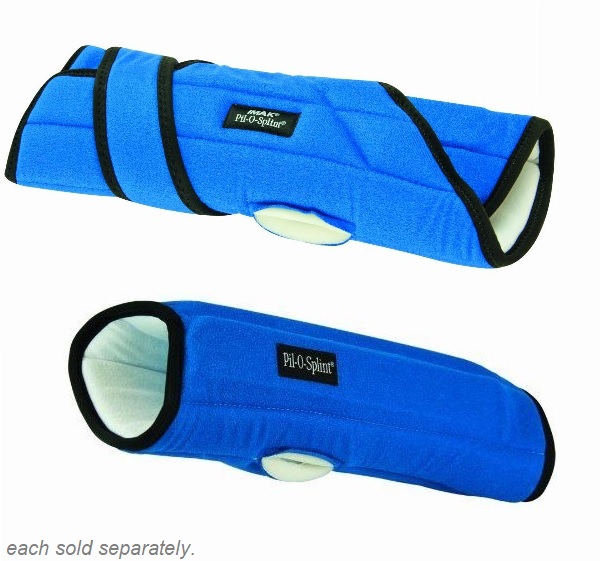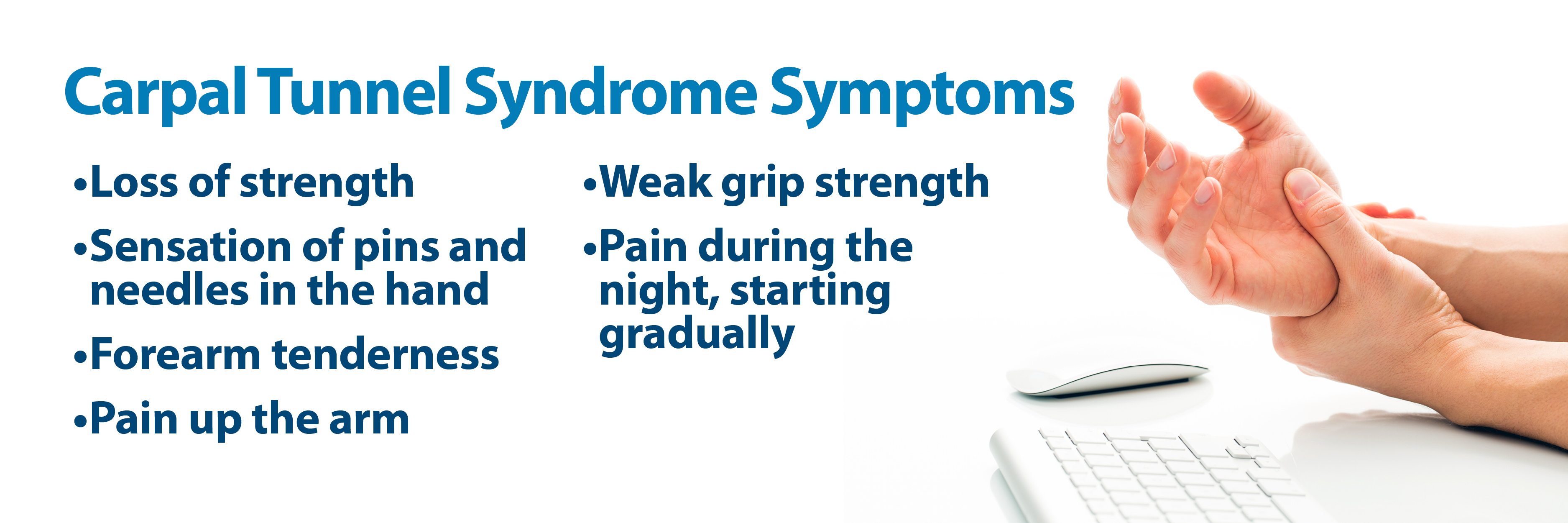 |
#1 Doctor Recommended Nighttime Carpal Tunnel Syndrome Relief!
IMAK RSI Pil-O-Splint by BrownMed - Get a good night's sleep by not letting carpal tunnel syndrome (CTS) pain keep you up. The patented Pil-O-Splint protects wrist area and treats carpal tunnel while you sleep for effective nighttime pain relief by keeping your wrist and hand in neutral position. Rest and night splinting are the #1 doctor-recommended conservative treatment for carpal tunnel syndrome. The Pil-O-Splint is Latex free and has two solid dorsal splints for support. The resting palm pad is filled with ergoBeads; unscented, recyclable low-density polyethylene (LDPE) to provide maximum comfort. Soft foam interior is covered by a 100% poly-flannel exterior and lined with 100% Cotton. Comfortable all-nightlong relief so you can rest while your wrist can heal without further damage. Helps relieve numbness, tingling and pain from Carpal Tunnel Syndrome and other conditions. Reversible/Ambidextrous; can be used on right or left. Model options in Standard (does not open) or Adjustable (opens to enable adjustments for smaller or larger sizes). Blue. A pillow for your wrist!
Features:
-
Helps relieve pain, tingling and numbness from Carpal Tunnel Syndrome.
-
Prevents hand from being held in harmful position while sleeping.
-
Soft cotton lining and cushioning foam allow skin to breathe.
-
Fits left or right hand.
Quantity: 1
Manufacturer: Brownmed
Material: Latex free; solid dorsal splints, ergoBeads - made of unscented, recyclable low-density polyethylene (LDPE) filled resting palm pad, soft foam and 100% poly-flannel exterior with 100% Cotton lining. The adjustable also contains a hook/loop closure strap.
Color: Blue w/black trim
Reversible/Ambidextrous: can be used on right or left
Indications: For protection of the wrist area (especially Carpal Tunnel Syndrome) for effective nighttime pain relief. Helps relieve numbness, tingling and pain from Carpal Tunnel Syndrome and other conditions especially resulting from RSI (Repetitive Strain Injury).
Standard model: Slide splint over either hand with dorsal splints on top and position so that thumb is resting outside of opening.
Adjustable model: (help from another person may be necessary) Open splint by unwrapping hook/loop closure strap and lay flat. Lay arm inside splint, positioning dorsal splints on top side of either hand and so that thumb is resting outside of opening. Close splint and wrap strap around comfortably. May need to re-position strapping.
Care & Cleaning: Hand wash cold, air dry.
Size/Model Options (sold separately);
Standard (A10312) Approximately 12" L x 5" W x 1" H GTIN/UPC: 649833103122
- recommended for average size hand/wrist/forearms
Adjustable (A10112) Approximately 12" L , opens to 11" W x 1" H (adjustable strap is about 15" L
- recommended for smaller or larger size hand/wrist/forearms GTIN/UPC: 649833101128
- Size/Model Options (sold separately);
Standard (A10312) Approximately 12" L x 5" W x 1" H GTIN/UPC: 649833103122
- recommended for average size hand/wrist/forearms
Adjustable (A10112) Approximately 12" L , opens to 11" W x 1" H (adjustable strap is about 15" L
- recommended for smaller or larger size hand/wrist/forearms GTIN/UPC: 649833101128


About Carpal Tunnel Syndrome
History of symptoms. Your
doctor will review the pattern of your symptoms. For example, because
the median nerve doesn't provide sensation to your little finger,
symptoms in that finger may indicate a problem other than carpal tunnel
syndrome. Carpal tunnel syndrome symptoms usually occur include while
holding a phone or a newspaper, gripping a steering wheel or waking up
during the night. Physical examination. Your
doctor will conduct a physical examination. He or she will test the
feeling in your fingers and the strength of the muscles in your hand.
Bending the wrist, tapping on the nerve or simply pressing on the nerve
can trigger symptoms in many people. X-ray. Some doctors recommend an X-ray of the affected wrist to exclude other causes of wrist pain, such as arthritis or a fracture. Electromyogram. This
test measures the tiny electrical discharges produced in muscles.
During this test, your doctor inserts a thin-needle electrode into
specific muscles to evaluate the electrical activity when muscles
contract and rest. This test can identify muscle damage and also may rule out other conditions. Nerve conduction study. In
a variation of electromyography, two electrodes are taped to your skin.
A small shock is passed through the median nerve to see if electrical
impulses are slowed in the carpal tunnel. This test may be used to
diagnose your condition and rule out other conditions.
Treat
carpal tunnel syndrome as early as possible after symptoms start. Take
more frequent breaks to rest your hands. Avoiding activities that worsen
symptoms and applying cold packs to reduce swelling also may help.
Other treatment options include wrist splinting, medications and
surgery. Splinting and other conservative treatments are more likely to
help if you've had only mild to moderate symptoms for less than 10
months. If the condition is diagnosed early, nonsurgical methods may help improve carpal tunnel syndrome, including: Wrist splinting. A
splint that holds your wrist still while you sleep can help relieve
nighttime symptoms of tingling and numbness. Nighttime splinting may be a
good option if you're pregnant. Nonsteroidal anti-inflammatory drugs (NSAIDs). NSAIDs, such as ibuprofen (Advil, Motrin IB, others), may help relieve pain from carpal tunnel syndrome in the short term. There isn't evidence, however, that these drugs improve carpal tunnel syndrome. Corticosteroids. Your
doctor may inject your carpal tunnel with a corticosteroid such as
cortisone to relieve pain. Sometimes your doctor uses an ultrasound to
guide these injections. Corticosteroids decrease inflammation and
swelling, which relieves pressure on the median nerve. Oral
corticosteroids aren't considered as effective as corticosteroid
injections for treating carpal tunnel syndrome.
If
carpal tunnel syndrome is caused by rheumatoid arthritis or another
inflammatory arthritis, then treating the arthritis may reduce symptoms
of carpal tunnel syndrome. However, this is unproved. Surgery may be appropriate if your symptoms are severe or don't respond to other treatments. The goal of carpal tunnel surgery is to relieve pressure by cutting the ligament pressing on the median nerve. The surgery may be performed with two different techniques: Endoscopic surgery. Your
surgeon uses a telescope-like device with a tiny camera attached to it
(endoscope) to see inside your carpal tunnel. Your surgeon cuts the
ligament through one or two small incisions in your hand or wrist. Endoscopic surgery may result in less pain than does open surgery in the first few days or weeks after surgery. Open surgery. Your surgeon makes an incision in the palm of your hand over the carpal tunnel and cuts through the ligament to free the nerve.
Discuss the risks and benefits of each technique with your surgeon before surgery. Surgery risks may include: During
the healing process after the surgery, the ligament tissues gradually
grow back together while allowing more room for the nerve. This internal
healing process typically takes several months, but the skin heals in a
few weeks. Resources: Mayo Clinic
|
|
 |



 Comfortable, keeps hand in a neutral position.
Comfortable, keeps hand in a neutral position. 


